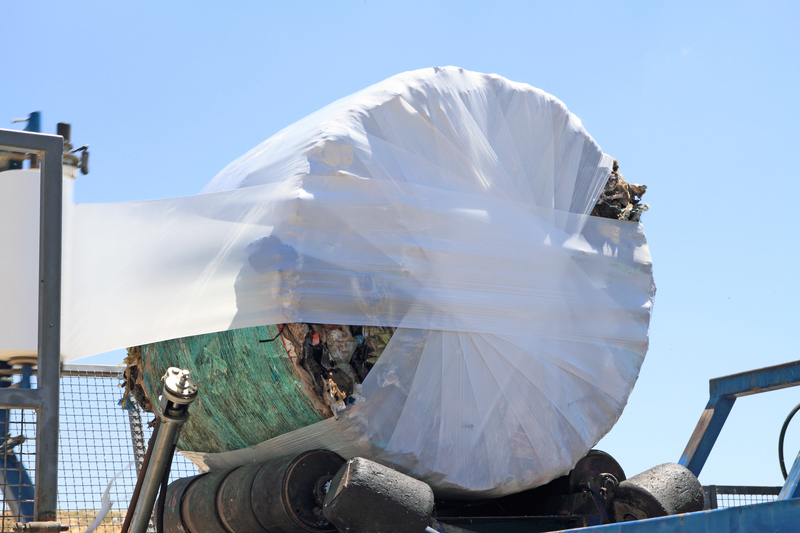Community Initiatives for Proper PPE Waste Disposal
The global COVID-19 pandemic highlighted the critical importance of personal protective equipment (PPE) in safeguarding public health. However, the surge in PPE use also triggered an unprecedented challenge--managing massive amounts of PPE waste. Face masks, gloves, gowns, and face shields became household items, but many communities were unprepared for the surge in PPE littering streets, waterways, and landfills. Understanding and implementing effective strategies for PPE waste disposal is now essential. This article explores community initiatives for responsible PPE disposal, their significance, and how local efforts can safeguard both human health and the environment.

Why Is Proper PPE Waste Disposal Important?
PPE waste--including used face masks, gloves, and other single-use gear--has proven hazardous when not disposed of correctly. This waste poses risks of:
- Spreading infectious diseases through contaminated items.
- Environmental pollution due to non-biodegradable materials.
- Harming wildlife that may ingest or become entangled in improperly discarded PPE.
- Straining waste management systems already struggling with increased waste streams.
Proper PPE waste management is not just a public health priority; it's critical for protecting our ecosystems and reducing long-term environmental impacts.
Challenges Communities Face with PPE Waste
Local authorities and community groups face several obstacles in handling PPE waste:
- Lack of Awareness: Many citizens don't realize PPE should not be recycled with regular materials, or simply toss them on the ground.
- Insufficient Infrastructure: Few public places offer designated PPE bins.
- Increased Volume: The dramatic rise in disposable PPE overwhelmed normal waste management services.
- Health Hazard: Sanitation workers are at risk of coming into contact with infectious materials when handling unsorted PPE waste.
Successful Community Initiatives for PPE Waste Disposal
1. Designating PPE-Only Disposal Bins
Many communities have set up PPE-specific disposal bins in high-traffic areas such as grocery stores, public transportation hubs, parks, and medical centers. These bins are well-marked, often featuring instructions for use and warnings about potential contamination.
- Example: Cities like Los Angeles and Singapore have rolled out PPE waste bins with foot pedals, preventing unnecessary hand contact and reducing risk for users.
- Tip: Local businesses can partner with councils to supply and maintain these bins, fostering a shared responsibility model.
2. Community Education Campaigns
Raising public awareness about responsible PPE disposal is foundational. Initiatives often include:
- Social media campaigns targeting different age groups.
- Printed flyers in multiple languages.
- School workshops incorporating PPE waste topics into curricula.
- Engaging local leaders to serve as role models for correct PPE disposal behavior.
3. Collaborative Clean-Up Drives
Monthly or seasonal PPE litter clean-up events have sprung up, inviting volunteers to help collect PPE waste from streets, parks, and beaches.
- These activities not only remove hazardous items but also foster a spirit of cooperation.
- Partnering with local hospitals and recycling firms ensures that collected items are disposed of correctly.
_Case Study: In Manila, "Mask Up, Bin It, Clean It" campaigns mobilized thousands of volunteers, collecting over a million discarded face masks in just a few months._
4. Safe and Secure Storage Prior to Disposal
Communities can encourage households to:
- Collect used PPE in sealable bags or containers.
- Wait 72 hours before placing them in general waste bins, as recommended by many health authorities, minimizing transmission risks to sanitation workers.
- Label bags as "hazardous" or "PPE waste" for proper handling.
5. Partnering with Recycling and Waste Management Firms
While most PPE is not recyclable, some companies specialize in PPE recycling innovations. By collaborating with these firms, local governments and organizations can divert PPE waste from landfills.
- Some technology firms are developing processes to sterilize and repurpose certain plastics found in masks and gloves.
- Businesses can set up collection points for bulk PPE waste, which recyclers then process responsibly.
Implementing a Community PPE Waste Disposal Program: Step-by-Step Guide
Step 1: Assess Local PPE Waste Generation
Understanding the volume and key sources of PPE waste in your area is vital. Conduct basic audits at:
- Hospitals and clinics
- Schools and universities
- Commercial hubs and markets
- Parks and public transit facilities
Step 2: Identify Stakeholders
Bring together relevant groups, such as:
- Municipal waste management authorities
- Healthcare facilities
- Environmental NGOs
- Local businesses and resident associations
Step 3: Set Up Collection Infrastructure
Deploy PPE-only bins in strategic locations based on audit findings. Ensure:
- Bins are clearly labelled and designed to minimize contamination risks.
- Collection schedules are adapted to prevent overflow and unsightly litter.
- All collection staff are properly trained and equipped with their own PPE.
Step 4: Launch Community Awareness Drives
Promote correct PPE waste disposal through:
- Interactive workshops and webinars.
- Local radio and newspaper announcements.
- Incentive programs recognizing neighborhoods with the best compliance records.
Step 5: Coordinate with Recycling Partners
Investigate if local or national PPE recycling initiatives exist. Even if most PPE must be landfilled, some components (like mask straps) may have recycling potential. Provide clear guidance on:
- Which items, if any, are suitable for recycling.
- Routes for bulk PPE waste generated by businesses or clinics.
Step 6: Monitor and Adapt
Track program effectiveness by:
- Measuring volume of PPE waste collected.
- Surveying residents about ease of disposal and awareness levels.
- Adjusting bin locations, educational strategies, or partnerships as needed.
Encouraging Innovation in PPE Waste Reduction
Community initiatives are most effective when combined with efforts to reduce PPE waste at the source. Leading strategies include:
- Promoting Reusable PPE: Encouraging the use of washable cloth masks where appropriate, reducing single-use mask waste.
- Supporting Eco-Friendly Alternatives: Advocating for compostable or biodegradable PPE items.
- Government Incentives: Working with local officials to subsidize PPE alternatives or support local manufacturers producing sustainable options.
Innovative design and consumption habits can sharply decrease the total volume of PPE entering the waste stream.
The Role of Schools in Promoting Proper PPE Waste Disposal
Schools are ideal spaces to instil lifelong habits and knowledge about correct PPE waste management in youth. Initiatives may include:
- PPE waste lesson plans across science and social studies subjects.
- Art competitions to design PPE disposal posters or recycling bins.
- Student ambassador programs that monitor and encourage compliance.
Addressing Inequalities: Ensuring All Communities Benefit
Not all communities have equal access to resources for PPE waste disposal. To bridge these gaps:
- Mobilize charitable donations for bins and supplies in under-resourced areas.
- Conduct outreach in multiple languages and formats (audio, video, print).
- Engage trusted community leaders to communicate culturally appropriate messages.
Success Stories: Real-World Impact of Community PPE Waste Initiatives
Case 1: Mumbai's "Mask Bank" Project
Community leaders in Mumbai launched Mask Banks--secure drop-off points for used masks--across major markets and transit stations. Local volunteers collected, safely bagged, and channelled the waste to municipal authorities, keeping tons of PPE out of drains and oceans.
Case 2: UK "Don't Drop, Bin Your PPE" Crusade
British councils rolled out the "Don't Drop, Bin Your PPE" campaign. Branded disposal bins, extensive media outreach, and school visits led to a 30% decrease in PPE litter within six months. A simple message, repeated widely, dramatically improved public behavior.
Case 3: Toronto's Medical Waste Partnerships
Toronto fostered partnerships between private waste contractors and hospitals to process PPE waste from COVID-19 testing centers. Rigorous collection, tracking, and sterilization practices ensured both public safety and ecological standards were met.
Long-Term Vision for Sustainable PPE Waste Management
As the world adjusts to post-pandemic realities, PPE will likely remain in daily use across healthcare, laboratories, and high-risk occupations. Sustainable community strategies must become embedded practices, not short-term fixes. Effective PPE waste management will include:
- Ongoing public education campaigns.
- Investment in improved disposal infrastructure.
- Closer research on developing recyclable or compostable PPE materials.
- Regular assessment of community compliance and environmental outcomes.

How You Can Get Involved
Everyone has a role to play in community PPE waste solutions. Individuals can:
- Always dispose of used PPE in a dedicated bin, never on the street or in recycling.
- Join or organize clean-up drives in your neighborhood.
- Talk to local schools or businesses about launching awareness campaigns.
- Support policies favoring sustainable PPE alternatives.
- Share educational resources with friends, family, and colleagues.
Conclusion
Proper PPE waste disposal is a shared civic and environmental duty. Community initiatives--from collection bins and outreach to partnerships and school programs--are the backbone of progress. By building awareness, fostering collaboration, and supporting innovation, we can reduce the risks associated with PPE litter and contribute to a cleaner, safer world for everyone.
Together, communities can turn the challenge of PPE waste into an opportunity for lasting positive change.